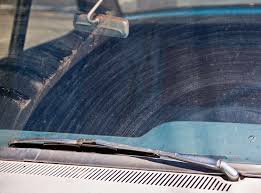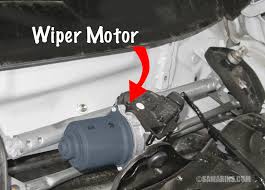Bus Wiper Fault Diagnosis and Troubleshooting: A Guide for Operators
Bus wipers are crucial for ensuring clear visibility and safety during adverse weather conditions. However, like any mechanical component, they can develop faults that need to be diagnosed and resolved quickly. In this blog post, we’ll explore common types of bus wiper faults, along with effective diagnosis methods and troubleshooting tips to keep your wiper system functioning optimally.
LEILI
Frank
9/20/20242 min read


Common Types of Bus Wiper Faults
Wiper Blade Skipping or Chattering
This occurs when the wiper blade does not make consistent contact with the windshield, leading to uneven wiping.
Wiper Blade Streaking
Streaks on the windshield can be caused by worn-out blades, dirt on the windshield, or improper blade alignment.
Wiper Motor Failure
If the wipers do not move at all or only operate intermittently, the motor may be malfunctioning.
Wiper Stuck in One Position
Sometimes, wipers can get stuck at the top or bottom of the windshield due to mechanical issues or a faulty motor.
Slow Wiper Speed
If the wipers operate slower than usual, it may indicate an electrical issue or motor wear.
Wiper Control Malfunctions
Issues with the control switch or wiring can cause the wipers to function erratically or not at all.
Fault Diagnosis Methods
1. Visual Inspection
Check Wiper Blades: Look for signs of wear, such as cracks or tears in the rubber. Ensure they are seated properly on the wiper arms.
Inspect the Windshield: Clean the windshield to eliminate dirt or grime that may affect wiper performance.
Examine the Wiper Arm: Ensure that the wiper arms are not bent or loose.
2. Test the Wiper Motor
Direct Power Test: Use a multimeter to check the voltage at the wiper motor connector. If there’s no voltage when the wiper switch is engaged, the problem may be in the switch or wiring.
Bypass Test: Temporarily connect the wiper motor directly to a power source to see if it operates. If it does, the motor is likely functional, and the issue lies elsewhere.
3. Check Wiper Controls
Inspect the Control Switch: Use a multimeter to check for continuity in the wiper switch. If there’s no continuity, the switch may need to be replaced.
Wiring Inspection: Look for damaged or corroded wiring in the circuit that connects the switch to the motor.
4. Observe Wiper Operation
Test Different Speeds: Run the wipers on different speed settings to see if they respond accordingly. If speeds don’t change, the motor or control switch may be faulty.
Check for Binding: Ensure that the wiper arms can move freely. If they are binding due to debris or ice, it could lead to motor strain or failure.
Troubleshooting Tips
1. Replacing Worn Wiper Blades
If the blades are worn, replace them with new ones. Regularly scheduled maintenance can help prevent skipping or streaking issues.
2. Cleaning and Aligning Wipers
Regularly clean the windshield and the wiper blades. If streaking persists, adjust the alignment of the wiper arms to ensure proper contact.
3. Motor Replacement
If the motor is found to be defective, replace it with a compatible unit. Ensure that all connections are secure and that the new motor is correctly installed.
4. Switch Replacement
If the control switch is faulty, replacing it is often straightforward. Ensure the new switch is compatible with your bus model.
5. Regular Maintenance Checks
Establish a routine maintenance schedule that includes checking wiper performance, cleaning blades, and inspecting components. This proactive approach can prevent faults from developing.
6. Consulting a Professional
If troubleshooting does not resolve the issue, consider consulting a professional mechanic who specializes in bus maintenance. They have the tools and expertise to diagnose complex issues.




